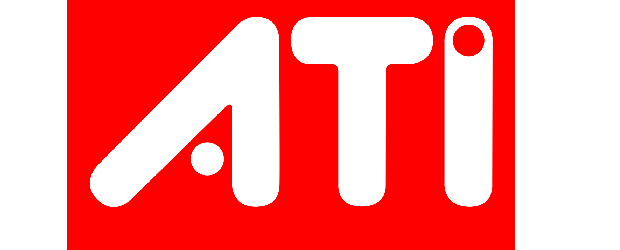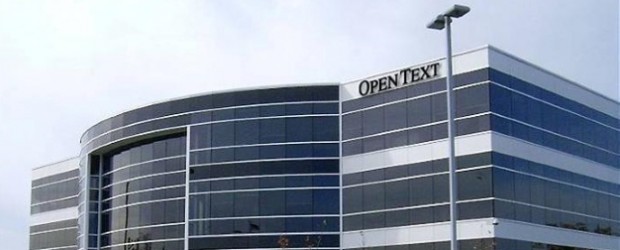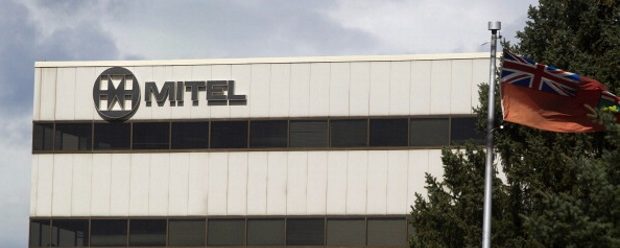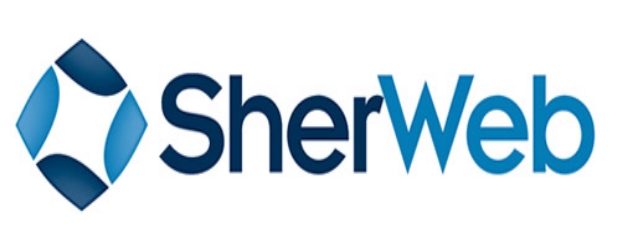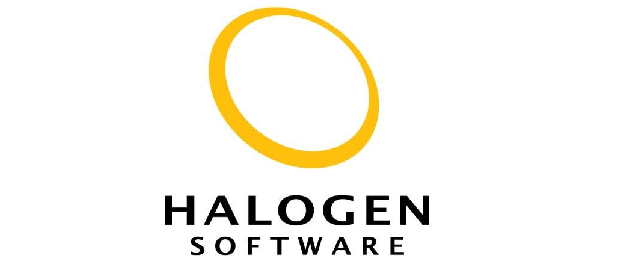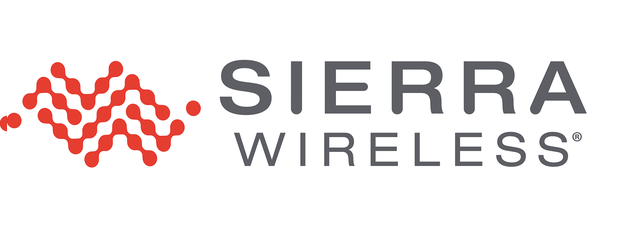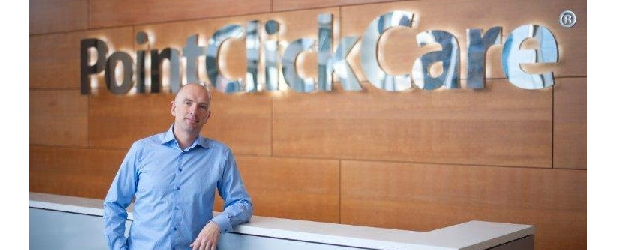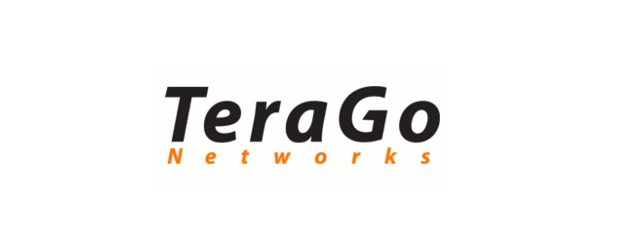20 Canadian tech brands of the past and of the future
Canada is celebrating its sesquicentennial anniversary this year – and over those 150 years, it has seen many IT companies come and go. Some reached amazing heights only to disappear, while others have evolved and even grown.
In this special Canada 150 slideshow we list 10 high tech companies who have gone, and 10 who are still in play and thriving.
Like our list? Don’t like our list? Let us know who we may have missed in the comments section.
Jeff Jedras contributed to this slideshow.
ATI Technologies
Not just a well-known brand within Canada, Markham, Ont.’s ATI Technologies was a global leader with its line of graphic processing units (GPUs) and motherboard chipsets. Along with the Intel and Windows stickers, ATI stickers were prominent on desktops and laptops sold around the world.
ATI can trace its history back to 1985 when it was founded by Lee Ka Lau, Benny Lau and Kwok Yuen Ho as Array Technologies Inc., and in short order became a market leader.
With the increasing inter-dependency of the computer processor and the graphics processor to drive greater performance, in 2006 ATI was acquired by processor manufacturer Advanced Micro Devices (AMD) in a deal worth US$5.4 billion. After that, the ATI brand was no more.
Learn more: Another Canadian tech brand disappears as AMD dumps ATI name
Bell Northern Research
Bell Northern Research (BNR) was based in Ottawa as a joint venture between Bell Canada and Northern Telecom (later known as Nortel Networks) to conduct telecommunications-related research and development. It can trace its roots back to 1971, when Bell Canada and Northern Electric combined their R&D organizations.
With offices in Research Triangle Park, N.C.; Richardson, Tx.; and Maidenhead, U.K.; BNR was a pioneer in the development of digital technology, helping bring us the first practical digital PBX and central office DMS. On the software side, BNR-developed Meridian Mail was one of the first all-digital voicemail systems.
Through the 1990s, Nortel gradually assumed a majority stake in BNR and, when Bell Canada divested its stake in Nortel, BNR was folded into Nortel’s R&D organization and lost its separate identity.
Learn more: Nortel’s circle of life
Clearnet Communications Inc.
Founded in 1984 in Scarborough, Ont., Clearnet Communications Inc. was a leading Canadian wireless services provider that underwent massive growth as mobility became ubiquitous in the late 1990s. Its Mike handset helped pioneer such innovations as two-way radio.
When Clearnet was acquired by Telus Corp. in 2000 in a deal worth over $6 billion it was called the biggest telecom acquisition in Canadian history, and it created what at the time was Canada’s largest wireless company. The combined entity had more than two million customers, over 4,000 employees, and a digital network with coverage for more than 21 million potential customers.
While the Clearnet brand may be gone, its influence lives on in Telus’ go to market. The advertising slogan “the future is friendly” has its roots with Clearnet, and Telus Mobility also owes its unique and quirky advertising look and feel to its Clearnet roots.
Learn more: Telus banks on wireless with $6-billion Clearnet grab
Cognos Inc.
A major name in Ottawa during the technology boom of the late 1990s, Cognos Inc. was a business intelligence (BI) software vendor that employed over 3,500 people at its peak. The company was founded in 1969 as Quasar Systems Limited by Alan Rushforth and Peter Glenister, who were joined by future CEO Michael Potter in 1972.
The company began, as many in Ottawa did, as a government consulting firm. It wasn’t until the 1980s that it made the shift to software, and with the hiring of Ron Zambonini as CEO in 1995 the focus at Cognos became BI products for local area networks. A decade later Cognos was slow to recognize the shift to Web-based technologies, leading to a string of acquisitions to shore-up its research and development.
In 2007, with a trend in the software industry around the merger of analytics, data warehousing and BI software, IBM Corp. acquired Cognos in a deal worth US$4.9 billion. Cognos would operate as a wholly-owned IBM subsidiary until early 2009, when it was absorbed into IBM’s Information Management brand. The Cognos name still lives-on today on some product offerings.
Learn more: Big blue acquires Cognos
Delrina
While fax technology is still relied upon in key niche verticals, there was a time when fax was king in business, and at the forefront of fax technology was Delrina.
Founded in Toronto in 1988, Delrina developed electronic form and PC-based fax software. It was probably best known for its WinFax application, which allowed PCs equipped with a standard fax-modem to send and receive faxes between other PCs or standalone fax machines. The company’s revenues would be dominated by WinFax but its form products included PerForm and FormFlow. It also developed a Web browser called CrackerJack, but Microsoft’s launch of Interner Explorer in 1995 made a non-free browser unsaleable.
In the summer of 1995, Delrina was sold to security software vendor Symantec in a deal worth US$415 million, creating the fifth largest software company in the U.S. The forms business would later be sold to Ottawa’s JetForm, and e-mail would continue to shrink the market for fax software over time.
Learn more: JetForm lays out plan to absorb Delrina
Hummingbird Ltd.
A Canadian software company, Hummingbird Ltd. was founded in 1984 and went public on the TSE in 1993, followed by a listing on the NASDAQ the following year. Toronto residents will probably remember the company for purchasing the naming rights for the O’Keefe Centre in 1996, naming it the Hummingbird Centre for the Performing Arts. Today, the naming rights are held by Sony.
After being founded as a consulting firm, Hummingbird evolved into the connectivity space as a developer of enterprise software solutions focused around the management of the lifecycle of enterprise content. Its electronic content management (ECM) offerings included Hummingbird Enterprise Suite and Hummingbird BI.
The company was acquired by Waterloo, Ont.-based Open Text in 2006 for US$489 million. The Hummingbird name still lives on today on some Open Text product offerings.
Learn more: Open Text takes over Hummingbird: Will it work?
JetForm
Another big player in the Ottawa technology industry during the late 1990s, JetForm gained an added level of visibility by purchasing the naming rights for JetForm Park in the 1990s, then home of AAA baseball’s Ottawa Lynx, farm team of the Montreal Expos.
The software vendor was founded as Indigo Software, and primarily did software consulting work for the federal government and IBM. This work led to the development of an electronic forms product called JetForm, which gained traction with the launch of Microsoft’s Windows 3.11OS.
As the JetForm products began to increase in popularity, the company took JetForm as its name and decided to focus on the software business. The company acquired Delrina’s electronic forms business in 1996 following that company’s acquisition by Symantec, and in 2001 it changed its name to Accelio.
The company was acquired by Adobe Systems in 2002, and the forms business was later absorbed and discontinued. While the JetForm name is no more, the technology lives on today as Adobe LiveCycle Enterprise Suite.
Newbridge Networks
While it was always somewhat in the shadow of its alliterative cousin, Nortel, Ottawa’s Newbridge Networks was a key player in the networking and telecommunications market through the 1990s.
Newbridge was founded in 1986 by Canadian technology entrepreneur Terry Matthews, after he was forced out of Mitel Corp., the company he founded with Terry Matthews in 1973. The name Newbridge came from Matthews’ home-town in Wales.
Matthews founded the company to develop networking solutions in the data and voice networking market, seeing an opportunity in the belief that data networking would grow faster than voice. Drawing on the plethora of networking talent in the Ottawa area, Newbridge became a major supplier to telcos, developing switching and ATM solutions.
The Newbridge name would fade from the Canadian technology landscape in 2000, when French telecom equipment maker Alcatel SA acquired the company for US$7.1 billion in an all-stock deal. Newbridge was merged with Alcatel’s Carrier Data Division to create a new unit, the Carrier Internetworking Division, based in Canada under the Alcatel name.
Learn more: Alcatel swallows Newbridge
Nortel Networks
There was arguably no higher-profile Canadian technology brand as Nortel Networks, and certainly none which could trace its lineage back as far as Nortel.
The roots of Nortel can actually be traced back to 1882 as a division of the Bell Telephone Co. of Canada, later called Northern Electric and Manufacturing Co. Fast-forward nearly a hundred years and Northern Telecom was focused on digital telephony in the networking communications space.
Nortel as most came to know it really came into being in 1995 though on its 100th anniversary, as the company streamlined under the Nortel brand with the goal of dominating the growing global marketing for public and private networks. After it peaked in 2000, a series of accounting scandals, questionable acquisitions, bad business decisions and a shifting market would see Nortel’s market capitalization, market share and work force plummet.
Nortel filed for protection from its creditors in January of 2009, marking the beginning of the end and the court-supervised wind-up of the company. It would be sold off piece by piece over the next year to its competitors, such as Ericsson and Avaya. And, after over 125 years the one-time iconic Canadian IT brand is no more.
SoftQuad Software
Not many technology companies can trace their roots to a publisher of experimental poetry. SoftQuad can though, having been founded in 1984 as a technology-focused spinoff from the Coach House Press in Toronto. Its purpose was to develop improved automated typesetting technology, and it would develop a commercial platform, SoftQuad Publishing Software, in part with software licensed from AT&T.
Over time, the company’s focus would shift toward Standard Generalized Markup Language (SGML) tools, including Author/Editor and later Panorama, a Web browser for SGML content. The company is best known today for HoTMetal, which was released in 1994 as one of the first commercially-available HTML editing suites. After an early market lead, it would soon receive strong competiton for developer affection from DreamWeaver and FrontPage.
SoftQuad was sold to Ottawa’s Corel Corp. in 2001 for US$37 million in stock, primarily keeping the XMetaL division in Vancouver. In 2002, Corel in turn sold the former SoftQuad assets to Vancouver’s Blast Radius. Most of the SoftQuad assets, including XMetaL, were sold again to JustSystems.
BlackBerry
Talk about reinventing yourself. BlackBerry was at one time know as Research in Motion or RIM. Then approximately 10 years ago the Waterloo, Ont.-based mobile device maker did not handle the launch of the original iPhone by Apple well and it was the beginning of the end. Well the end of its smartphone business.
Today BlackBerry does not want you to associate the brand with smartphones anymore. The company has shifted to software and enterprise solutions. BlackBerry’s focus now lies in security, software, and automotive operating systems, rather than hardware.
OpenText
Recently OpenText went on a shopping spree and picked up EMC’s enterprise content division, which includes Documentum, InfoArchive and LEAP products shortly after the big mega merger with Dell closed. The Waterloo, Ont.-based OpenText specializes in enterprise information management solutions and is world renowned.
OpenText is now working to deepen its existing enterprise information management portfolio with new enterprise content management and information lifecycle management solutions.
CEO Mark Barrenechea said the company is at the beginning of the digital revolution where extreme connectivity, automation, and computing are converging.
Mitel Networks
Ottawa-based Mitel Networks was founded by two Canadian tech giants in Michael Cowpland and Sir Terry Matthews in 1972.
The company, known today for its portfolio of cloud, unified collaboration and voice-over-IP solutions, has withstood the test of time in the IT sector and survived many market transitions.
In 2016 Mitel may have been on the previous list of 10 Canadian technology brands that are no more when it entered into a merger agreement with Polycom. It was structured as a near $2 billion deal where Polycom shareholders would eventually get 60 per cent ownership of the newly combined company. But the deal broke down and PolyCom ended up paying a $60 million breakup fee.
SherWeb
The Sherbrooke, Que.-based cloud provider SherWeb has been called by many executives a “diamond in the rough.”
SherWeb describes itself as a Web-hosting provider offering email and collaboration tools mostly on the Microsoft stack including products such as Exchange Server, SharePoint Server, Lync Server and Dynamics CRM.
They were one of the first cloud companies to be included in Ingram Micro’s Cloud Marketplace, which essentially got SherWeb recognized. They also made both CDN’s and IDC Canada’s Top Canadian Cloud Companies list.
Saba-Halogen Software
Halogen Software Inc., about a month ago, would be described as an Ottawa-based leader in talent management software. Now you can describe them as a North American leader of talent management software because Silicon Valley-based Saba Software Inc. acquired Halogen for $12.50 in cash per share.
The newly combined company has more than 1,000 employees serving more than 4,000 customers in 195 countries around the globe.
Reason for the team up is they need each other to address a new market opportunity in people-centric learning and engagement where organizations look to meet employees on new terms, and transform the employee experience.
Sierra Wireless
One way to maintain relevance in the global market is to keep re-inventing yourself. And, that is what Richmond, B.C.’s Sierra Wireless is doing. The company was known for being a multinational wireless communications vendor, but today they want to lead the charge for Internet of Things (IoT).
Sierra Wireless now sports a fully integrated device-to-cloud solution for IoT and has entered a joint business relationship with PwC Canada to help enterprises around the world develop and launch transformative IoT services and new business models.
With more than 1,000 employees worldwide, Sierra Wireless offers 2G, 3G and 4G embedded modules and gateways cloud and connectivity services.
Smart Technologies
You can make the argument that Calgary-based Smart Technologies invented the Smart Room System that includes network readiness check, usage reporting and proactive monitoring.
Founded in 1987, Smart Technologies was one of the first high tech companies to understand what they were good at and build from there. Smart Technologies developed a unified communications display-based business with a goal of boosting workplace productivity and efficiency.
The company has an impressive roster of customers such as the NBA’s Los Angeles Lakers, the U.S. Military, and several K-12 education deployments.
Today Smart Technologies is focusing on improving the connected learning experiences for classrooms around the world with a new line of educational displays and software.
RedKnee
An odd name for a high-tech company but the Toronto-based RedKnee Inc. is one of the leading Canadian companies of the digital age. Redknee’s motto is to monetize the digital world.
RedKnee is a communications service provider and its solutions are on premise, in the cloud and offered as a Software-as-a-Service.
Research firm Frost and Sullivan said Redknee quadrupled revenues in two years and now has more 250 customers in 90 countries serving about two billion subscribers. And, in Oct. of 2016 RedKnee entered the Gartner Magic Quadrant for Integrated Revenue and Customer Management for Communications Service Providers.
PointClickCare
What more can you say about PointClickCare, that hasn’t already been said? The Toronto-company has not been around long but it has made a major impact in the market. Consider this one fact about PointClickCare: More than 14,000 senior care providers use their cloud-based electronic health records solution.
The company started 15 years ago with an integrated platform to coordinated senior care. Today, this platform adheres to regulatory and compliance guidelines and helps people get reimbursed faster, while working on a single resident record.
Recently PointClickCare CEO, Mike Wessinger (pictured) won the Glassdoor Employees’ Choice Award recognizing the Highest Rated CEOs for 2017 in the Canada.
TeraGo Networks
In 2015, Internet service provider TeraGo Networks Inc. made a big splash by acquiring Kelowna, B.C.-based cloud provider RackForce for $33 million.
Today, the Thornhill, Ont.-based TeraGo is one of the top Canadian-based managed cloud and connectivity solutions providers with a focus on accelerating digital transformation. Since the RackForce deal, TeraGo manages more than 3,000 cloud workloads, nine data centres, and owns its own IP network. The company serves approximately 4,000 businesses in 46 major markets across Canada.

